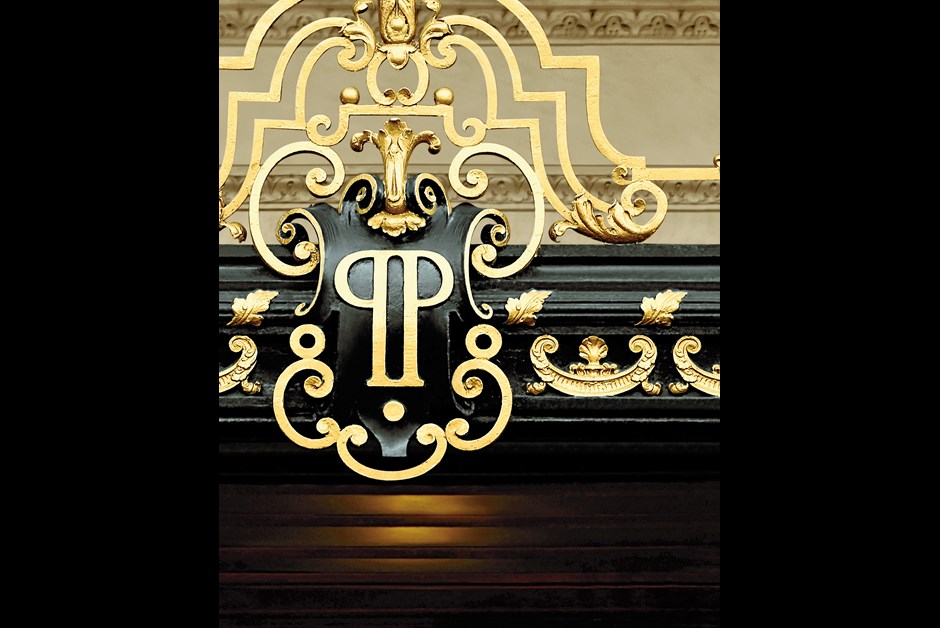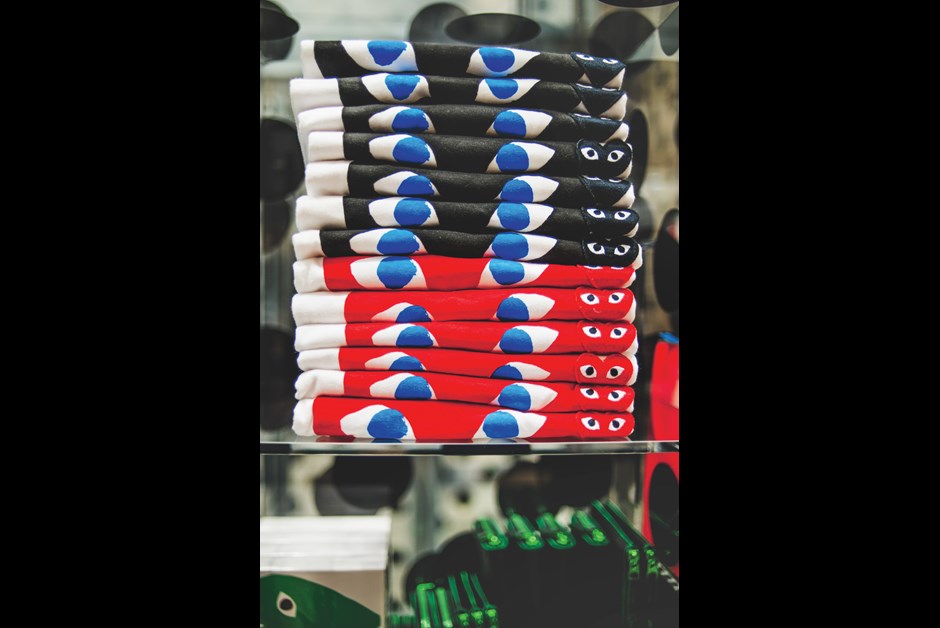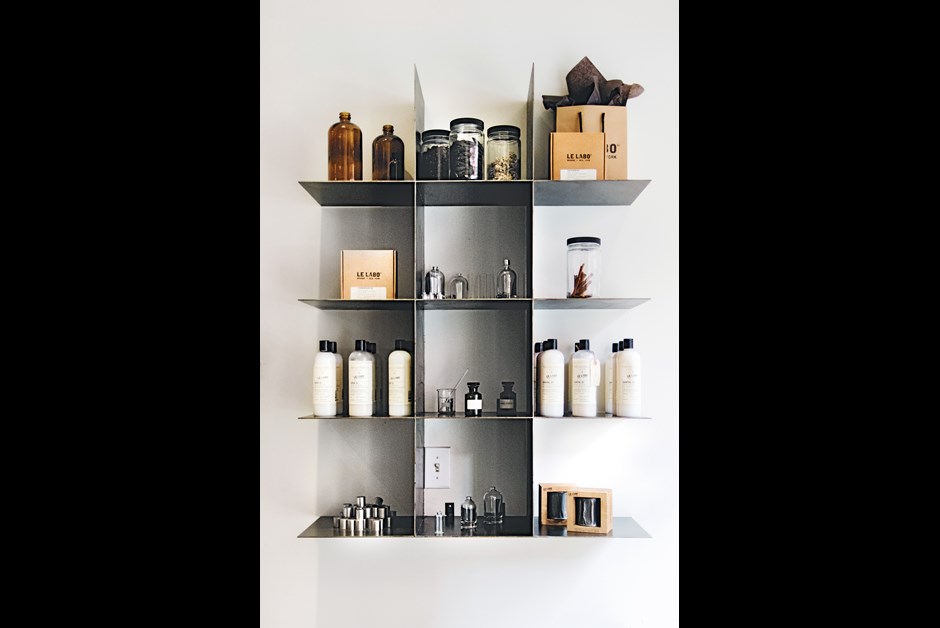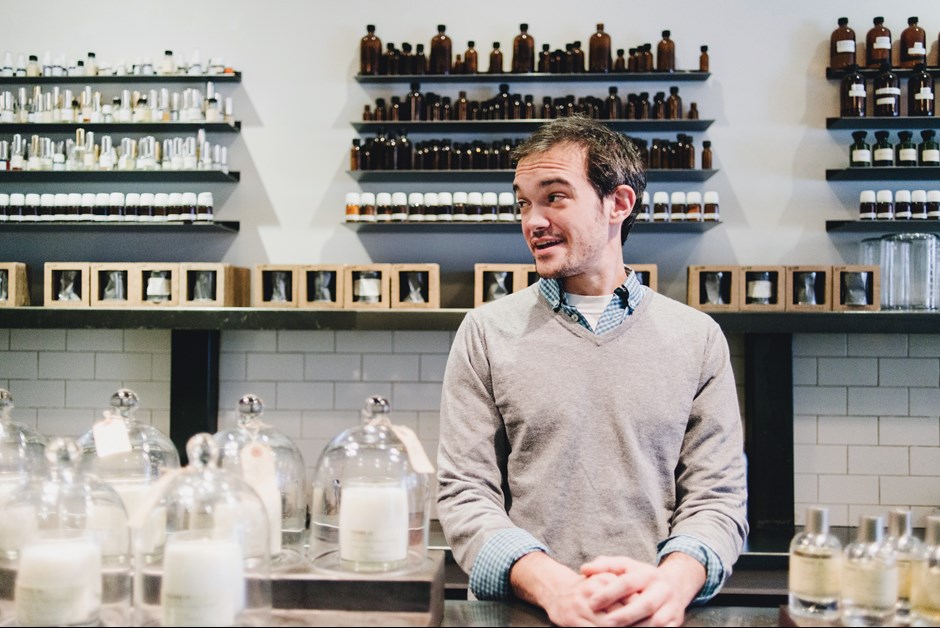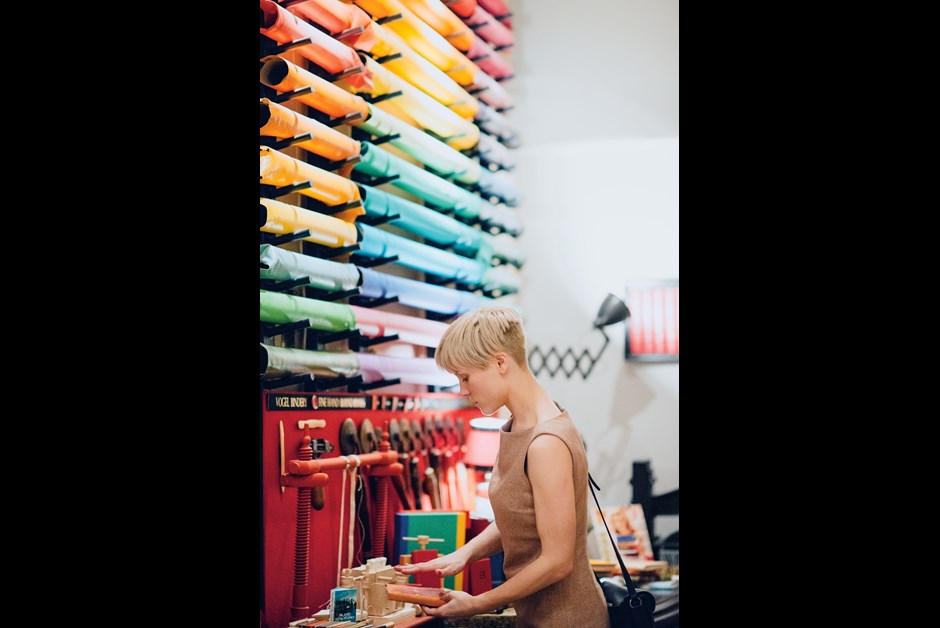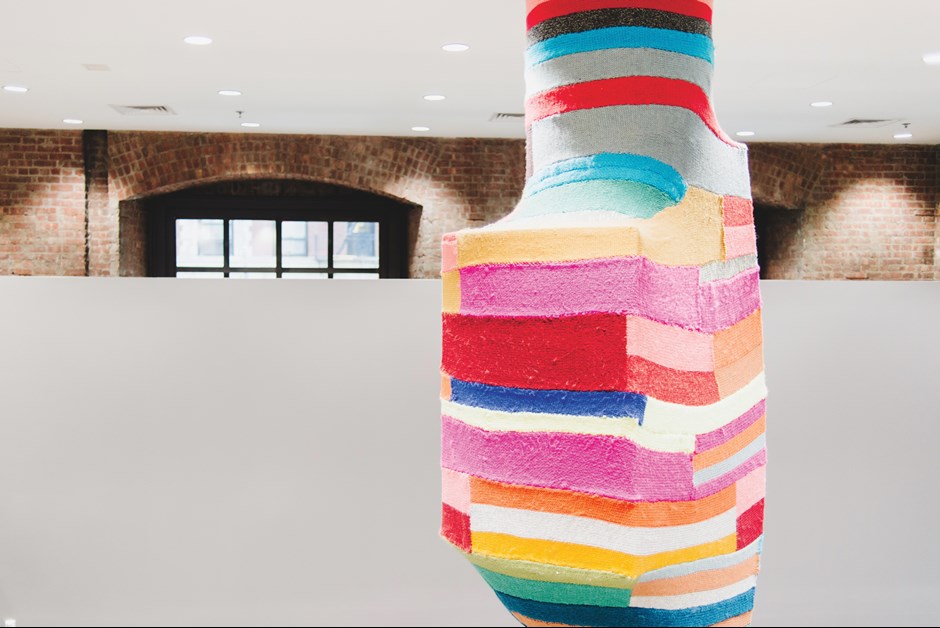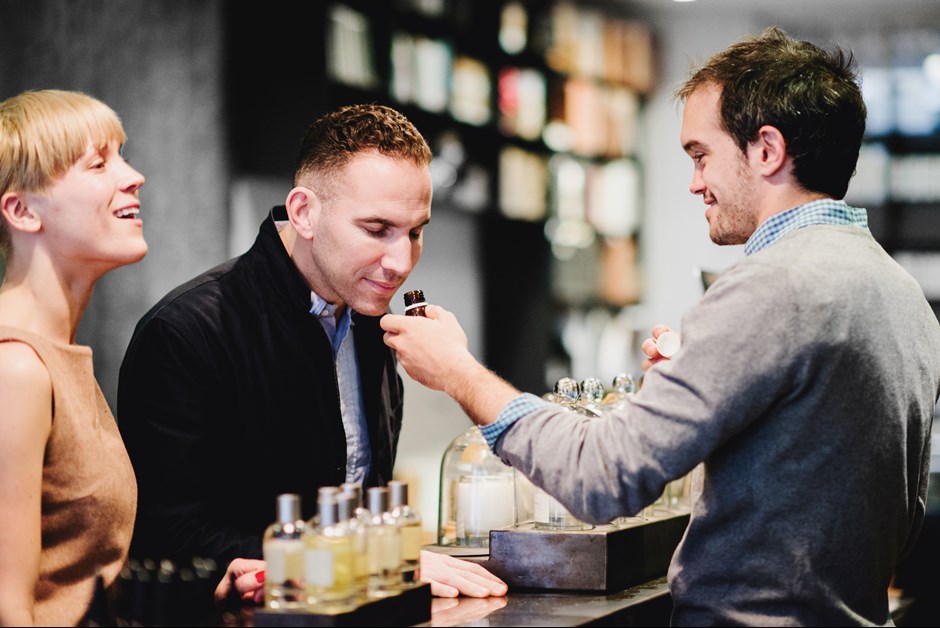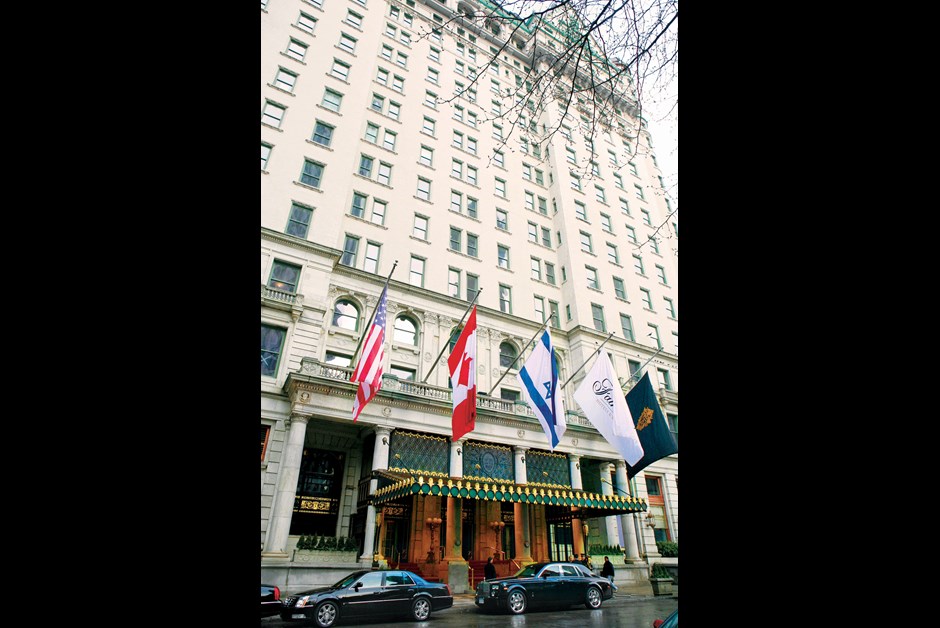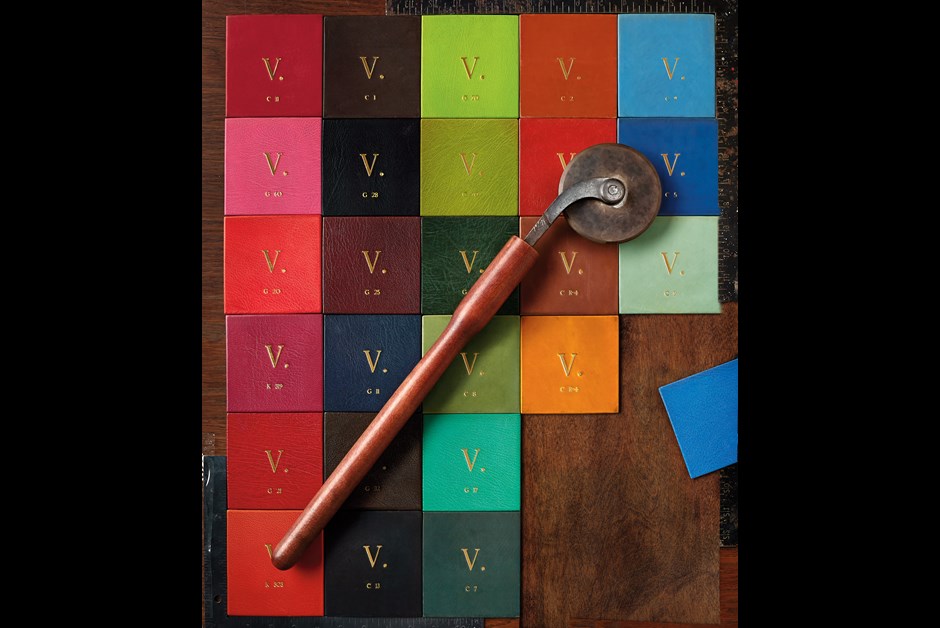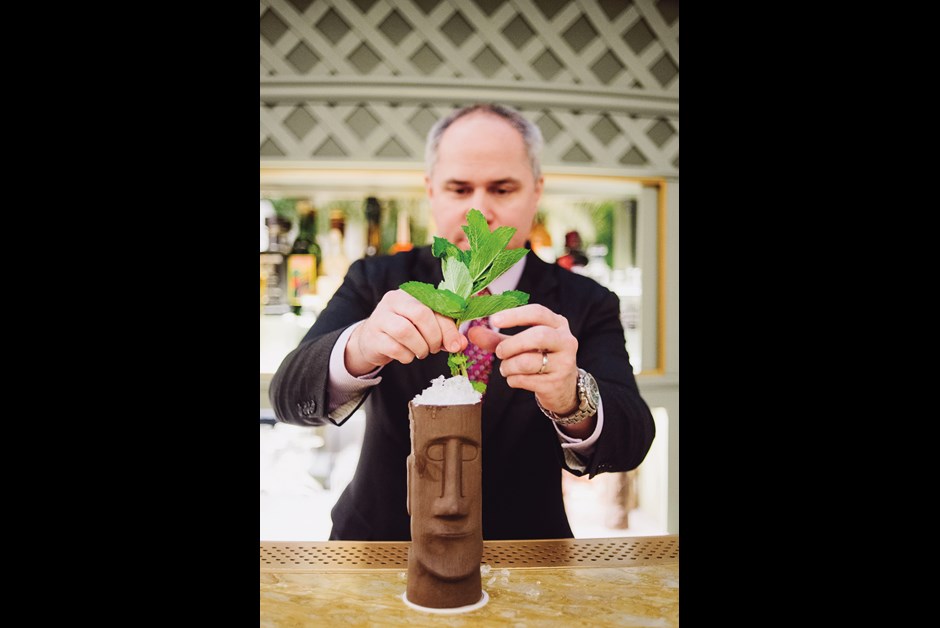Tailor-Made New York
Tailor-Made New York
A weekend at The Plaza proves you can have a one-of-a-kind time in a city of eight million – you just need to know where to look.
By: Eve Thomas
Photos by: Lauren Colchamiro
“New York might be a melting pot, but everyone wants it their way,” says Chef Todd English, setting down a plate of oysters fried in bacon butter. The evidence, he insists, is all around his eponymous restaurant: Peking duck buns, steak frites, spicy tuna rolls. The 200-seat space is modeled after a European dining hall, with separate sections for different culinary styles, but with one notable exception – you can order any type of cuisine you want, wherever you are in the room.
“We knew we couldn’t tell New Yorkers, ‘You can’t have a burger at this table, you have to walk over there to get it.’ No way,” says English, who opened the concept restaurant five years ago in The Plaza, A Fairmont Managed Hotel. So now locals come in for lunch, sit at the sushi counter and have a BLT from the sandwich station. (Case in point: while I down the oysters, my partner Brett enjoys a kale salad.) Or they spot English at work and ask him to whip up something off-menu. Or they share a communal table with hotel guests, play temporary tour guide, say they “know a little place…” And nobody misses a beat (or a bite) thanks to headset-equipped bussers who weave in and out of the crowd like backstage staff at Fashion Week.
Finding that special moment in New York, and in one of the world’s most iconic hotels, can seem like an impossible feat. It doesn’t take a Sex and the City bus tour to feel like you’re part of a herd, not in a town where even “hidden gems” are already at risk of being overexposed.
So, how do you create made-to-measure memories? By letting the city’s visionaries lead the way: characters and creators whose bespoke objects and experiences prove it’s still possible to make New York your own – even if only for a weekend.
Lauren Colchamiro is a good person to start with. She’s a native New Yorker who knows every inch
of the city, including the best spots for photo ops. Colchamiro was one of the first employees with Flytographer, a company that lets tourists hire photographers based wherever they’re traveling. What at first seems extravagant (“Like wedding photography minus the wedding,” observes Brett) begins to make sense as we pass a crowd of tourists posing in The Plaza lobby, one of them clasping a selfie stick, a long retractable arm that lets travelers capture moments without having to flag down a passer-by.
“It’s not a paparazzi-style experience,” Flytographer founder Nicole Smith assured me earlier. “It’s more like meeting a friend-of-a-friend. They can take your photo in Central Park but also tell you about their favorite café.”
As we push through The Plaza’s revolving door, Colchamiro snaps us without breaking stride, as quick and nimble as Bill Cunningham. As we head downtown in a cab, she offers tidbits about each neighborhood we pass: where to shop for jewelry, where to stop for pizza, what the traffic will be like on the way back.
“I’ll usually meet people beforehand so we can plot out a route,” she says. “Without knowing the city, you can’t really tell how long it takes to get somewhere, not even with Google Maps.”
The meeting also helps clients get used to her “dancing all around them” with her camera. Colchamiro, who has snapped Taylor Swift and Pharrell Williams, swears that despite living in the age of Instagram, most people still hate having their picture taken. Luckily for her, visitors tend to be awestruck by their surroundings. “They spend too much time looking around to be self-conscious.”
Brett and I are amply distracted as soon as we hit Nolita, home to Le Labo’s very first stand-alone shop. It’s a postage-stamp-sized apothecary that, when opened nine years ago by French transplants Fabrice Penot and Edouard Roschi, set the tone for Elizabeth Street’s transformation into a neighborhood of indie boutiques.
Every inch of the store is a study in industrial chic, a style that so many modern merchants seek out but which can only exist where there is a real confluence of history. One wall is concrete, another, pressed tin – a surprise unearthed during renovations. A clerk in a waxed apron prepares ingredients for a bottle of Rose 31, one of the brand’s 35 scents (and found in Fairmont’s amenities), on a sleek precision scale. The small shop lets staff remain hands-on – compounding perfumes by the order and personalizing labels with their new owners’ name, the date and the store’s address. This is anything but fast fragrance.
“I call this place the lungs of Le Labo,” says Isaac Wolf-Tanner, a born-and-bred New Yorker who seems utterly at home behind the white tiled counter. Like Le Labo’s founders (whom the New York Times dubbed “antipreneurs”), he’s not about the hard sell. If anything, he dissuades new customers from leaving with the first bottle they like, comparing the experience to a blind date. “You might have a good first impression, but you want to go for coffee, get to know them first,” he explains while misting a paper strip with Tubereuse 40, a perfume inspired by and sold exclusively in the brand’s New York locations. I like its hint of citrus; Brett shakes his head.
“Fabrice once said he tries to make the perfect scent and then takes one thing away,” Wolf-Tanner tells us. This embracing of imperfection isn’t just a marketing scheme, it’s a founding philosophy. In the corner by a pair of worn leather chairs sits a stack of mustard-colored paperbacks: Leonard Koren’s Wabi-Sabi: for Artists, Designers, Poets & Philosophers, a guide to the Japanese principle of seeing beauty in imperfection.
As we spritz and sniff, we do notice one thing missing – the usual jar of coffee beans. It seems there’s no need for a quick palate cleanser when you’re savoring every note.
More entrancing smells and sights await at our next stop: Dover Street Market (DSM) in Murray Hill. The quiet midtown neighborhood seems like an odd choice for Rei Kawakubo’s exceptional take on a department store, but then the creator of Japanese fashion label Comme des Garçons has never been predictable.
As we make our way into the somber gray building, the aromas of Rose Bakery – pumpkin quiche, carrot cake – fill the air. The sweet smells cease as we enter the store’s glass elevator, but the sense of being inside a weird, wondrous place permeates all seven floors, with help from a sound installation by Brooklyn-based artist Calx Vive. It’s all part of what Kawakubo calls “beautiful chaos.” A Willy Wonka fantasy for fashion fans in a world where luxury often means stark minimalism.
Along with Comme des Garçons’ lines, DSM carries labels hand-picked by Kawakubo, “kindred souls who all share a strong personal vision” (and draw an eclectic mix of shoppers), including 166-year-old French house Moynat’s only purses in the city, leatherwork from
20-something New York upstart Zana Bayne and limited-edition sneakers that prompt line-ups around the block.
“Coming here is a bit of a pilgrimage,” says a personal shopper bedecked in black-on-black knits and ruffles. “Some people have never even been to the area before. The idea that you can still rediscover or reinvent a neighborhood in New York… it’s kind of amazing.”
In addition to original artwork running through the store – yarn bomber Magda Sayeg’s “Everlasting
Gobstopper (alcohol inducing),” found-object artist Leo Sewell’s “Rap Wrap” – a selection of brands get to decorate their own space, resulting in an incredible patchwork of colors and textures that couldn’t be cookie-cutter if it tried. Architectural Junya Watanabe jackets give way to a capsule collection of Prada dresses and, past that, skateboards from cult New York brand Supreme. It’s the perfect place for seeking out something special… and leaving with exactly what you didn’t know you needed.
Back at The Plaza, meeting bookbinder Paul Vogel feels a bit like stepping onto the set of The Royal Tenenbaums. In his atelier, tucked in a corner of the lobby’s Assouline book shop, I find Vogel perched by a wall of jewel-toned paper rolls, sporting a pale seersucker suit, his long hair and beard bleached white by the Hamptons sun. His past is appropriately picaresque: laboring in African diamond mines, modeling for life drawing classes in Paris. (“It was perfect, I couldn’t speak French.”) What brought him back was an introduction to the British bookbinding community, along with the feeling that it was time to get a “real job.”
So Vogel apprenticed with bookbinders across Manhattan, many of whom didn’t make it into the digital age. (“He retired; they relocated.”) It’s clear that Vogel, who has received commissions from Oprah Winfrey and Ralph Lauren, is a rare find in an increasingly rare industry. But his outlook is hardly bleak: “The funny thing about being on the endangered list is people start to appreciate you again.” Whether you bring him a medieval manuscript or a treasured family cookbook, Vogel can bind or restore it as if it were a work of art, using archival materials like cotton rag paper and linen tape.
As for the particular demands of New Yorkers, Vogel remembers a local publishing house that once wanted to work with him. “I explained what I did as well as I could and they called me later asking for a quote on 13,000 books. To bind. By hand,” he recalls. “I explained again, and they still wanted my fee and a due date. So I said, ‘Oh, I don’t know, about $9 million and 37 years?’”
From Vogel’s mezzanine-level workshop, we find ourselves in the perfect position to watch another piece of history evolve: The Plaza’s bustling lobby. Bellboys direct mountains of monogrammed luggage, honeymooning couples stop for a cocktail at The Champagne Bar, little girls go for Eloise Tea in pink tutus.
The enduring appeal of the hotel, and this city, is everywhere, whether you’ve visited once or a thousand times. So when, after a Broadway show that evening, Brett and I slide into the backseat of a cab and I say: “The Plaza,” the driver simply nods and we’re off. Sometimes, to get what you want in a crowd of eight million, all you need are the magic words.
